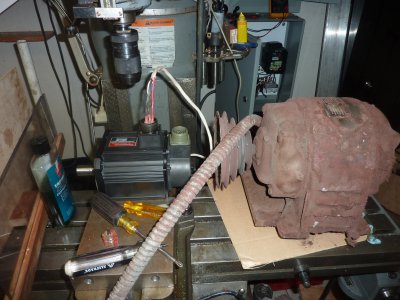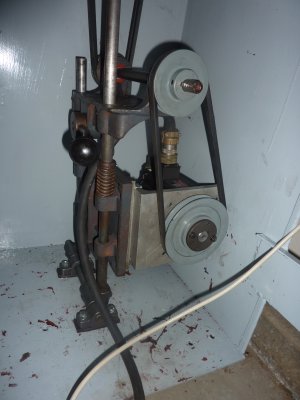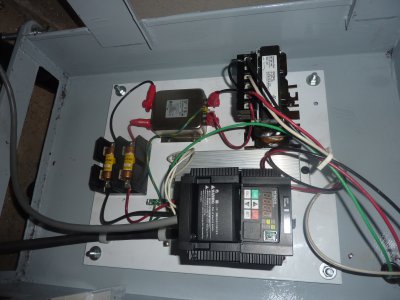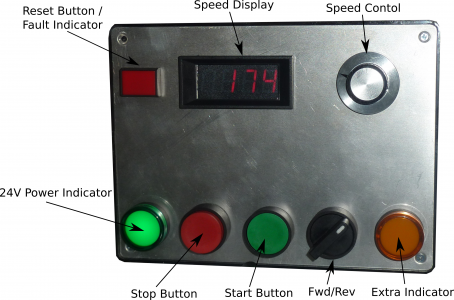- Joined
- Dec 29, 2013
- Messages
- 321
I was able to get my WJ200 to run a Permanent Magnet motor by following the attached supplement from hitachi. The motor spins, but I am still trying to figure out all of the parameters. The picture shows a 2Hp Servo Motor next to the 1HP three phase motor it will be replacing  Note all of the lovely red crud still attached to the old motor. I am planing to run the motor in my lathe and replace the step pulley with a single pulley setup and run the motor in Variable speed mode. I should have a lot more information by the end of the weekend. The motor was a freebe at work (~$600 on fleabay). I used the Autotuning feature to measure the motor parameters since I don't have the datasheet for this exact motor available.
Note all of the lovely red crud still attached to the old motor. I am planing to run the motor in my lathe and replace the step pulley with a single pulley setup and run the motor in Variable speed mode. I should have a lot more information by the end of the weekend. The motor was a freebe at work (~$600 on fleabay). I used the Autotuning feature to measure the motor parameters since I don't have the datasheet for this exact motor available.

Some potential issues that still need to be sorted out:
1) Long Spin-up / Ramp down time: The motor seems to take a long time to spin up and the time does not seem to be affected by the standard ramp parameters. I think this has to do with the sensorless control scheme used.
2) Some Audible noise. There is still some high frequency squealing even at full speed. This may be less of an issue if the motor is loaded down and mounted in the cabinet, but it is something I would like to reduce.
3) the Wiring I will be ordering the correct connector tonight. I just wanted to make sure the motor actually worked before investing a whole lot into getting it to run
I will be ordering the correct connector tonight. I just wanted to make sure the motor actually worked before investing a whole lot into getting it to run 
View attachment WJ200 Additonal_function_Ver2_2.pdf


Some potential issues that still need to be sorted out:
1) Long Spin-up / Ramp down time: The motor seems to take a long time to spin up and the time does not seem to be affected by the standard ramp parameters. I think this has to do with the sensorless control scheme used.
2) Some Audible noise. There is still some high frequency squealing even at full speed. This may be less of an issue if the motor is loaded down and mounted in the cabinet, but it is something I would like to reduce.
3) the Wiring
View attachment WJ200 Additonal_function_Ver2_2.pdf





